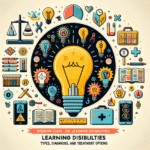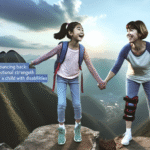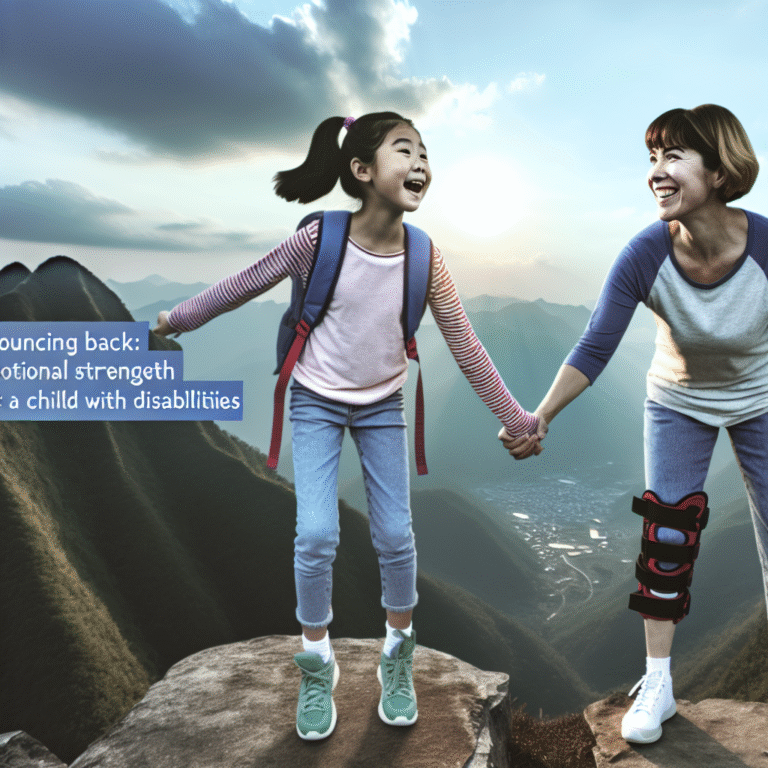Recognizing the Signs: Early Indicators of Bipolar Disorder in Teens—The Ultimate Guide to Understanding and Intervention

Introduction
In a world where mental health discussions are becoming increasingly vital, recognizing early indicators of mental health conditions is more important than ever, especially for our youth. One condition that often goes unnoticed in teenagers is bipolar disorder, a complex mental health condition that can significantly impact adolescence.
Understanding and recognizing the signs of bipolar disorder is essential for early diagnosis and intervention, paving the way for effective management and support. In this article, we’ll explore recognizing the signs: early indicators of bipolar disorder in teens, shedding light on key symptoms, helpful case studies, and actionable steps for parents and teachers.
Understanding Bipolar Disorder
Bipolar disorder is characterized by extreme mood swings, ranging from manic highs to depressive lows. These mood changes can affect a teen’s emotional, physical, and social well-being. According to the National Institute of Mental Health, approximately 2.8% of adolescents aged 13 to 18 may experience bipolar disorder at some point. Understanding the nuances of this condition is crucial for those advocating for the mental health of teens.
The Spectrum of Symptoms
The symptoms of bipolar disorder in teens can manifest in various ways. For clarity, let’s break down these symptoms into manic and depressive episodes.
Manic Episodes
Manic episodes can present as an elevated mood or increased irritability. Common signs include:
- Increased energy and reduced need for sleep
- Impulsivity, including risky behaviors
- Uncontrollable racing thoughts
- Inflated self-esteem or grandiosity
- Rapid speech and difficulty concentrating
Depressive Episodes
Conversely, depressive episodes may be marked by:
- Persistent sadness or hopelessness
- Withdrawal from social interactions
- Changes in appetite or sleep patterns
- Lack of interest in previously enjoyable activities
- Feelings of worthlessness or guilt
Recognizing the Signs: Case Study Analysis
Let’s explore two real-world case studies that illustrate the early indicators of bipolar disorder in teens.
Case Study 1: Sarah’s Highs and Lows
Sarah, a 16-year-old high school junior, was known for her vibrant personality and active participation in school clubs. However, her friends began to notice some changes. During her manic phases, Sarah would stay up late, meticulously planning school events and engaging in impulsive behavior, such as spending her savings on last-minute trip plans. Conversely, during her depressive episodes, she withdrew from her friends and struggled to focus on her schoolwork. Recognizing these patterns allowed her teachers to suggest that Sarah speak to a mental health professional, leading to a timely diagnosis and support.
Analysis: Sarah’s case highlights the importance of recognizing the signs and how peers can play a crucial role in the early identification of bipolar disorder.
Case Study 2: Jake’s Transformation
Jake, a bright 15-year-old, had a sudden shift in behavior. Previously a straight-A student, he began experiencing emotional highs and lows that affected his academic performance drastically. His parents noticed that he exhibited signs of mania, such as excessive talking and hyperactivity, followed by significant depressive episodes characterized by isolation and lethargy. After they consulted a therapist specializing in adolescent mental health, Jake was diagnosed with bipolar disorder.
Analysis: Jake’s story reinforces the notion that recognizing the signs is often multifaceted, requiring awareness from both parents and teachers to ensure timely intervention.
How to Recognize Early Indicators
When it comes to recognizing the signs: early indicators of bipolar disorder in teens, awareness is key. Here are some practical tips for parents, teachers, and friends.
Observing Behavioral Changes
Changes in a teen’s behavior can serve as critical early indicators:
- Look for increased irritability or emotional fluctuations.
- Monitor for academic performance dips alongside social withdrawal.
- Pay attention to signs of impulsive behavior or risk-taking activities.
Communication is Crucial
Open lines of communication can encourage teens to share their experiences. Here are some strategies to facilitate these conversations:
- Create a safe environment where teens feel valued and heard.
- Use open-ended questions to encourage dialogue about their feelings.
- Offer support and understanding without judgment.
Educating Yourself and Others
Educate teenagers and those around them about bipolar disorder. Consider the following:
- Share resources such as books or articles about recognizing the signs of bipolar disorder.
- Host informational sessions at schools to increase awareness among educators and students.
Seeking Professional Help
If you notice a combination of these signs and symptoms persisting over time, it may be time to seek professional help. An early diagnosis can significantly impact the effective management of bipolar disorder.
- Consulting a mental health professional is the first step in diagnosing bipolar disorder, and this process may involve evaluations, questionnaires, and interviews.
- Developing a treatment plan: Once a diagnosis is made, tailored treatment plans, including therapy and medication, can be initiated.
- Ongoing monitoring: Continuous support and monitoring can help manage bipolar disorder effectively.
Managing Bipolar Disorder in Teens
Once diagnosed, managing bipolar disorder involves collaboration, treatment, and education. Here are some essential components:
Therapy Options
Cognitive Behavioral Therapy (CBT) and family therapy can provide teens with strategies to cope with their condition and improve their relationships.
Medication Management
Medication can help alleviate symptoms of bipolar disorder, including mood stabilizers and antipsychotics. Regular check-ins with a healthcare provider are essential for effective treatment.
Support Systems
Involving a support system—family, peers, and mental health professionals—can foster resilience and provide the encouragement needed during tough times.
Self-Care Practices
Encouraging self-care practices can also be beneficial. Strategies include:
- Regular physical activity to boost mood.
- Practicing mindfulness and relaxation techniques.
- Establishing a consistent sleep schedule.
Conclusion
Recognizing the signs: early indicators of bipolar disorder in teens is a crucial step toward ensuring their mental wellness. Knowledge is power, and by being vigilant and proactive, parents, educators, and peers can create an environment that promotes understanding and care.
Whether you are a parent noticing subtle changes in your teen or a teacher observing shifts in classroom behavior, your awareness and action can lead to early intervention which is instrumental in managing bipolar disorder. Let us foster a community that prioritizes mental health, encourages open dialogues, and supports our teenagers on their journey to wellness.













